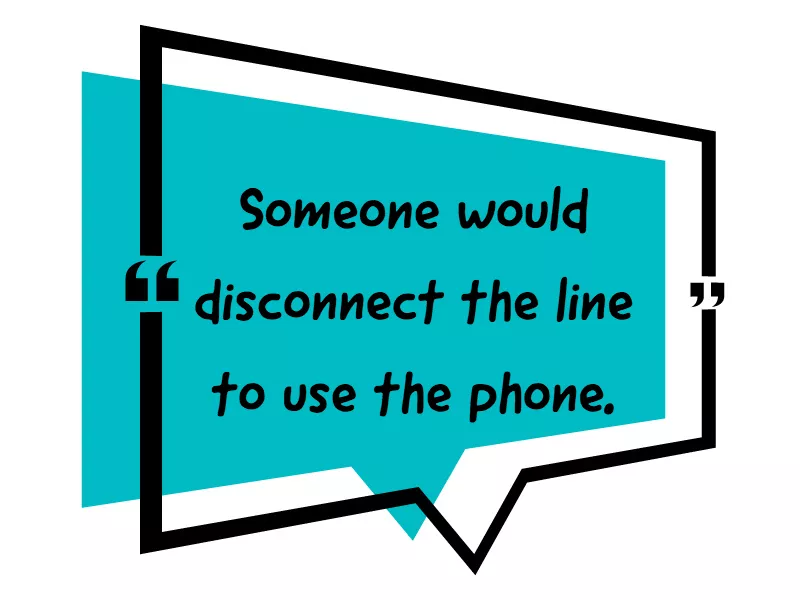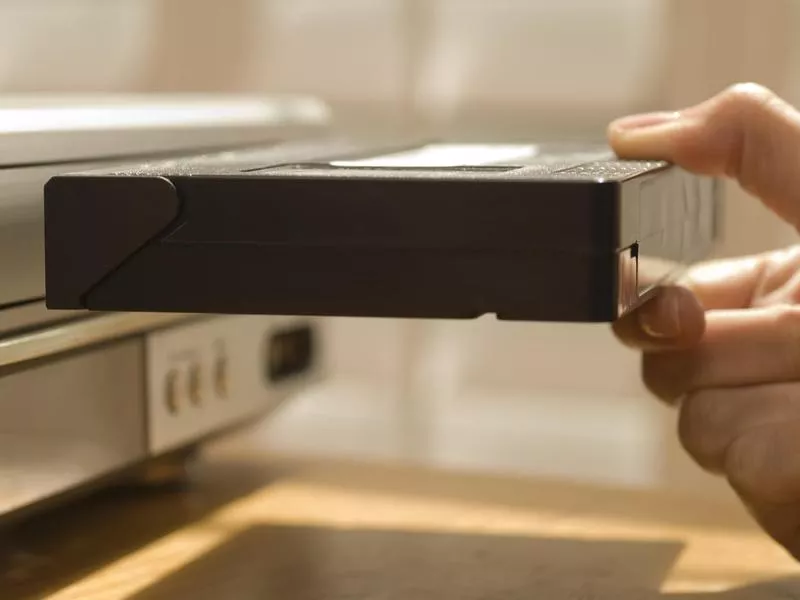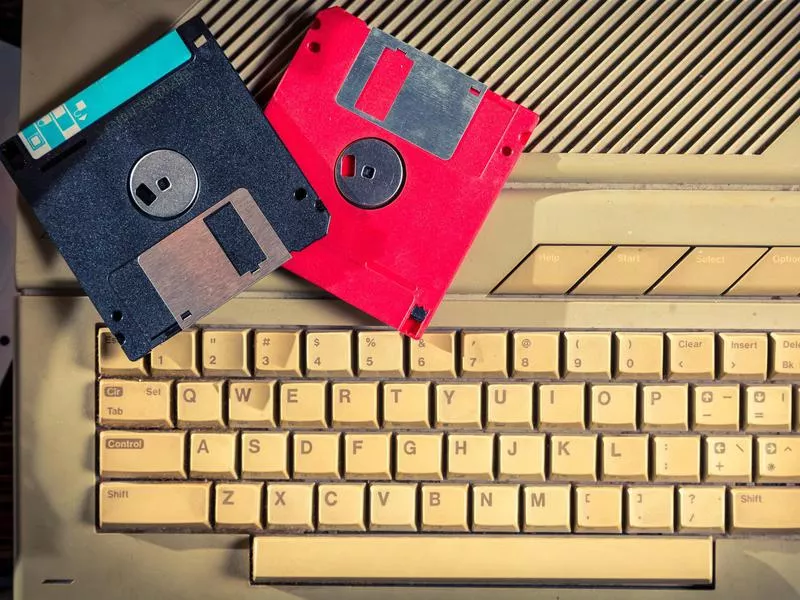Life was simple in the ’90s. If you believe the hype, it was the best time to be a kid. In pop culture, Will Smith was showing off some serious dance moves in “The Fresh Prince of Bel-Air,” the Spice Girls and Backstreet Boys were redefining pop groups, wide-leg jeans were back in fashion and Alicia Silverstone was teaching everyone just how clueless we could be.
It was a life before the Digital Age became rampant, when internet ran through phone lines, information was saved on floppy disks, selfies were pixelated and pets were, well, actually digital. Our childhood wasn’t based on technology, which was a luxury. Our pleasures were simple, and our future was full of opportunities. All in all, it was a more innocent time.
For those feeling nostalgic, here are some laugh-out-loud experiences from the ’90s that you can share with your own family. Or, at the very least, you can use them to remind your kids just how easy they have it now.
Used a Landline

Landlines were the only way to call people in the ’90s. Getty Images
Landlines were how we got in touch with people. We remembered all our friends’ numbers (or would just consult the phone book). Every call was made with the hope that the person you wanted to speak to would answer instead of an annoyed parent. The cords, when not twirled obsessively, would be stretched as far as possible to avoid eavesdropping relatives.
And if we didn’t want anyone to overhear or scream at us for hogging the phone, we would walk to the nearest phone booth within the shielded confines of the glass walls, drop in a coin and start talking.
Chose Between Using the Landline or the Internet

It was quite the struggle: You could either use the internet or the telephone. Back then, the internet ran through telephone lines. The dial-up connection was so slow that getting onto the internet took time and, by then, someone would want to use the telephone. So, you disconnected and tried again later.
Then, there were those horrible times when you were trying to download something, and just when it reached 80 percent (after some hours), someone would disconnect the line to use the phone. It’s why parents had fixed hours for internet usage, and we had a legitimate excuse as to why the line was busy.
Danced the Macarena

The Macarena was all the rage in the ’90s. Getty Images
Face it: Everyone knew all the steps of Los Del Rio’s “Macarena.” Everyone was doing it, everywhere — birthdays, weddings and any kind of celebration that involved music. We didn’t know what the lyrics meant, and we invented our own mumbo jumbo to sing along.
There was no other song that could get people on the dance floor, irrespective of age or dancing abilities. It had the easy-to-mimic dance sequence: arms out front, flip your palms, hug yourself, arms to the head, to the thighs and then the hips, and sway and don’t forget to go, “Ay Macarena!” In fact, it was so good, why don’t we bring it back?
Read a TV Guide

The guides came every week or month with your regular newspaper or magazine subscription, and you had to sit and read them for a few minutes before choosing a show. The best ones were those that printed little synopses telling you what to expect that week.
Most shows on TV then didn’t repeat episodes. If you missed one, you had to wait for a friend to tell you all about it or watch the recap in the next week’s show — unless of course you had a blank VHS tape that you could record the show on using your handy VCR…
Rented VHS Tapes to Watch Movies

Remember going to the video store or library to rent a VHS? Getty Images
At the time, videotapes were the preferred movie format. It was a treat: You would go to the video store or library, sift through the movies before selecting one (the blurb on the cover helped) and rent it.
These tapes were played on the aforementioned VCR. But before the picture could start, you had to rewind the tape (if the previous person hadn’t done it) to get to the start — a process that took time. The joy was in watching the same movie twice or thrice before returning it back to the store.
Used an Encyclopedia for Research

These thick glossy-covered encyclopedias were the ’90s version of Google. You got all your information and facts from them. And if you didn’t know something, you looked it up in the book. These were usually sold by door-to-door salesmen (often in a set), and Encyclopedia Britannica was an expensive favorite.
Each book was arranged alphabetically, and you had to actually read and write down notes instead of copying and pasting them. The worst bit was missing a volume and realizing that was the one you needed to complete your project. For those digitally savvy families, there was also Microsoft Encarta, essentially an encyclopedia on a compact disc or CD — remember those, folks?
Burned a CD

Burning a CD was the closest thing to saving files on a USB drive or even in the cloud. Getty Images
Speaking of CDs, while kids in the ’90s made mixtapes, they also took that concept to the next level by burning CDs of their favorite songs. The most difficult part was actually choosing the best songs because even CDs had limited space. The process was similar to the way we save things to a USB drive — insert a blank CD and copy music files to it.
Back then, you needed particular software to do this as most computers didn’t come with a built-in “burner.” The burned CD was then decorated with the names of the songs or messages (in markers) taking care not to scratch its surface. You typically listened to this on a Discman, a big contraption that didn’t fit in pockets and had to be carried by hand. And in your bag was a bulky case containing all the CDs you’d burned, creating the ultimate playlists.
Changed Channels Using Buttons on the TV

Instead of fighting over the remote, fights would happen at the TV set as people jostled to select their favorite channel. Everything was done manually; necessitating many trips back and forth to get the proper brightness, color and volume.
Every TV set was a box, with knobs and buttons, and either an antenna attached to the top or one placed on the roof of the house. Adverse weather or interrupted programming meant much fiddling with the antenna till the screen cleared up.
Used a Floppy Disk

Floppy disks were anything but floppy. Getty Images
Once upon a time our computers had disk drives. One of those drives was meant for floppy disks — which were not floppy despite the name. They were equivalent to the save button on today’s computers.
These were black storage devices with limited space. They were ideal for smaller school or college projects. Heavier items like games and videos had to be stored across several floppies. And they would die, taking all your stored data with them, at any time.
Took a Selfie Using a Gameboy

Nintendo’s strangest creation was the Game Boy Camera, a tiny eyeball-shaped lens (it could turn 180 degrees) attached to a game cartridge. This could take low-resolution photos and customize them with wigs and glasses.
This rudimentary digital camera had a black-and-white (or green) screen, and you could connect it to the Gameboy Printer for a postage-stamp-size grainy picture.
Cared for a Virtual Pet

Tamagotchis taught children everywhere the joys of raising a pet (digitally). Getty Images
The Japanese egg-shaped portable toy (game?) Tamagotchi allowed us to hatch and raise our own digital “pets” — pixelated black-and-white creatures on tiny little screens. We had to care for these creatures as they “grew up,” feed them (meals or snacks), clean up after their bathroom breaks, teach them things and scold them. If they weren’t cared for, they could get sick and even die.
Many a parent used these toys to teach their children the value of caring for an actual pet. It was meant to teach us responsibility, though most often the pets would die. And they could be reborn with just a click of a button. These were sometimes worn as a fashion accessory, around one’s neck or on one’s wrist.
Created Art Using MS Paint

MS Paint was our first glimpse of creating digital art, most of which was just squiggly lines and shapes filled with color. There were dozens of colors and shades to choose from, and every mistake could be undone with just a click.
The tiny pencil encouraged many a creative mind and, while the output wasn’t top notch, it was a good starting point. Its biggest value was its simplicity — anyone could draw on it irrespective of age or artistic talent.
Told Your Fortune Using Paper

An origami fortune teller was one of the most fun ways to predict the future. Getty Images
It was one of the greatest distractions during class. Fold a bit of paper, using origami-like detailing, and cover each fold with colors, numbers, letters or fun predictions of the future — i.e., you will get good grades, the boy you like will talk to you, and you will win a new compass box.
The player telling the fortunes would hold the four corners with their fingers and thumbs and move it revealing the fortune on the slip underneath. This self-diagnostic test was a good way to pass time and occasionally reveal secrets.
Recorded Memories in Autograph Books

Autograph books (or slam books) usually made an appearance at the end of the school year or at the time of a farewell. They were a way to preserve the important (addresses, birthdays, telephone numbers) and fun details of friends.
These were secretly filled in during class hours or more artistically at home using colored pens, stickers and drawings. Crushes were revealed, friends were ranked and all sorts of gossip could be found within those pages.